Flavours of India: An Incredible Palette of Sensations
Do you remember what emotions Indian food evoked when you first tasted one of the dishes? Was it an instant delight, or did it take you some time to understand the combination of flavours you were experiencing? You definitely won’t find a dish in India that doesn’t include aromatic spices in its recipe. Sometimes it can even be a combination of sweet fruits and spicy chilies that just blows the minds of people unfamiliar with such flavour manipulations. We are happy to invite you into the world of Flavours of India, where you’ll learn more about flavours and the details of combining ingredients.
You may want to learn more about the country’s culture for a general understanding, or perhaps you are tasked with creating paperwork on a similar topic.
In that case, using the custom writing service will be the best option to complete the task, while in the meantime our article will be useful to everyone’s curiosity, regardless of the purpose of the reading.
Learn together how to add bright colors to your daily routine, savoring the taste you may not have known yet.
What Are The Flavours of India?
The Flavours of India are an incredible combination of aromas and tastes in one dish, which can be felt by combining complex spices and herbs with the right ingredients. It is important to realize that there are quite a few universal spices that are great for every dish, while some of them enhance the taste of a particular product, such as chicken or salmon.
Prepared only with fresh ingredients, they are used to enhance the intensity of flavours, add color to a dish and even create an extra exotic note.
The basis of almost every dish-making process is the preparation of a sauce based on a combination of suitable spices. A variety of vegetables and herbs are sure to be added there for a more intense and vibrant flavor.
Get familiar with the flavours of traditional Indian dishes and tastes you just have to know.
Flavours of India: Vegetarian Specialities
If you come to an Indian restaurant, snacks are what you should traditionally start your meal with. Use Indian snacks and appetizers at your parties, family dinners, or any other event. It will help improve your appetite and keep you or your guests waiting for the subsequent dishes to appear.
- Paneer do Pyaza: This sauce was created during the Mughal era. The modern version of the dish can be prepared and served both with meat and exclusively in a vegetarian version. The peculiarity of the dish is the use of a large number of onions, preferably two different types of onions. In combination with tomatoes and green peppers, this sauce must include a spice palette. Paneer do Pyaza is traditionally served with rice, meat, roti, or any vegetable dishes.
- Paneer Tikka Masala: If you are interested in a vegetarian version of the dish, this version will win your heart. The ingredients here will be Indian cottage cheese, cooked with aromatic herbs on the grill, which will then be slowly cooked in a pan of spicy hot sauce. The combination of the aroma of smoke, the softness of the cheese, and the spiciness of the sauce will win the heart of any sceptic.
- Kadai Paneer: This dish is extremely spicy and includes paneer itself and bell peppers. If you want to feel the combination of incredibly flavourful spices, order the traditional Kadai Paneer, which includes a real palette of flavours. Usually might be eaten with rice and any kind of meat dishes.
- Malai Kofta: Using the usual words, this dish is meatballs made with cheese, vegetables, or a combination of both. The desired level of spice is achieved not only through the use of spices but also through the presence of ginger. These balls are pre-fried and served in a rich, creamy sauce. The sauce includes a palette of spices as well as onions and tomatoes.
- Mattar Paneer: Made with Indian curd and peas, the dish appeals to its fans with its unique curry flavor. With a sufficient level of spice, Mattar Paneer is a sauce based on onions, tomatoes, curries, and other spices. After reaching the perfect consistency of the sauce, the Indian cheese itself and green peas will be added.
- Saag Paneer: The difference between this dish and the previous ones will be the use of large amounts of spinach and green chili peppers. Similar to previous versions, to the sauce of turmeric, chili, ginger, and spinach, Indian cheese will be added at the end of cooking. The recipe also includes the use of other ingredients, varying according to the traditions of the family.
- Yellow Daal: This dish is perfect to serve with rice. You can consider it as a spicy soup or create it as a thick sauce. This dish is created based on lentils (Daal) with the addition of tomatoes, ginger, aromatic herbs, hot peppers, garlic, and oil. We guarantee that vegans will enjoy the food experience as well.
- Chana Masala: If you are crazy about chickpeas, this curry will win your heart. The dish consists of chickpeas, tomatoes, ginger, onions, garlic, and a mixture of spices. Chana Masala can be served ready-to-eat with bread or basmati rice.
- Aloo Gobi: Combining potatoes and cauliflower, this dish consists of these vegetables initially roasted separately with spices but then mixed together. Using chili powder, coriander, and turmeric, the cook achieves a rather rich taste of curry, which makes the dish interesting to eat.
- Vegetable Korma: This vegetable curry is made with coconut milk, chili (or ginger), garlic, and a combination of turmeric and spicy herbs. Add any vegetables traditionally appropriate to Indian cuisine and your personal preference and finish off your cooking in a sauce of the above ingredients.
- Seasonal Vegetable Curry: This particular curry should vary slightly in composition depending on the season of the year. It uses vegetables that are fresh at the time you prepare the dish. You need to prepare a traditional curry sauce and mix it with the vegetables that are available at the time and enjoy the result.
Flavours of India: Chicken Specialities
If your heart belongs to chicken dishes, consider the following meat preparation options with bright flavours of India.
- Chicken Tikka Masala: Pieces of chicken, pre-marinated in cream or yogurt are fried and then smoldered together in the same pan along with a flavorful tomato sauce. The important point is to fry the chicken over high heat until a quality crust appears and then finish cooking in the sauce. Chili, cumin, and coriander give the dish an unforgettable flavor.
- Butter Chicken: Cooking chicken in this version is similar to the previous recipe. This curry is prepared with the addition of butter and cream. Roast the chicken in the same way and start creating a creamy sauce at the end of the process.
- Chicken Curry: A classic aromatic Indian curry made with ginger, onions, garlic, chicken broth, cream, and a mixture of spices such as turmeric, coriander, ground mustard, cloves, and some others. You need to fry the ingredients, mix the spices with the broth and add to the pan. This is a simple and incredibly bright representative of the classic flavours of India.
- Chicken do Pyaza: During the preparation of Chicken do Pyaza, chicken pieces are fried with lots of onions and spices. Adding yogurt to the sauce allows the dish to acquire an insanely delicate taste. It is recommended to fry the spices in a dry pan before the process and then continue cooking.
- Chicken Korma: Combine the chicken broth with fresh chili pepper, cumin, ginger, coriander, and tomato puree. Roast the chicken and add it to the finished sauce. Cloves and cardamom will also help greatly enhance the flavor of the dish.
- Chicken Vindaloo: Careful, it’s hot! The classic version of this curry recipe uses hot green chili peppers. The chicken must necessarily be pre-marinated in a mixture of herbs with the addition of garlic and vinegar. The level of spiciness is adjusted according to personal preference.
- Chicken Kadai: The name of the dish comes from the name of the dish in which the chicken itself is cooked. Cooked in Kadai, the meat will be marinated in advance with ginger and garlic, after which it will be roasted over low heat together with tomatoes. The use of masala is the main cooking secret.
- Chicken Saag: Mix the cooked spinach with the milk and turn it into a puree. To the roasted ginger, onion and garlic, and tomatoes you need to add a palette of spices and make a sauce. Next, the roasted chicken and spinach puree is added to the sauce. The mixture is boiled for 10 minutes and served with rice.
Flavours of India: Lamb Specialities
Lamb is a more demanding type of meat but Indian cuisine has mastered the tricks to create its own unique dishes with it admirably.
- Lamb Curry: Prepare a puree of ginger and garlic, which will help to add spice to the dish. It is necessary to stew this puree with cinnamon, coriander, and turmeric before adding the pieces of meat. Once the meat is cooked, the tomato puree will be added to the pan. The use of chili peppers is also a must in the recipe.
- Lamb Vindaloo: Lamb pieces are cooked in a spicy-sweet Vindaloo sauce served with rice or bread. The preparation of the dish involves the use of a marinade for the meat consisting of wine and vinegar. Garlic, ginger, and chili peppers add their uniqueness during the main process of cooking the meat.
- Lamb Korma: The sauce for Lamb Korma is made with cashews, yogurt, onions and garlic, and spices such as cardamom, paprika, and turmeric. As in any other recipe, the addition of ginger helps achieve the desired level of spiciness.
- Lamb Saag: The preparation of Lamb Saag is similar to Chicken Saag, and the main ingredient of the dish is also spinach and a dozen different spices. Serve the dish with naan bread and rice, which are perfect for it.
- Lamb Tikka Masala: The use of coconut milk, lemon, and spices allow the lamb to acquire a radically new palette of flavours. Marinate the lamb in these ingredients for one or more hours. After this time, cook the lamb and enjoy the result.
Flavours of India: Tandoori and Kebab Specialities
If you have tried kebab at least once, you will return to this dish more than once. For those who have not yet explored the pleasure of this food, we suggest you pay attention to the following dishes
- Chicken Tikka Kebab: Lime combined with cream and spices makes a perfect marinade for the chicken. The meat can be cooked in the oven or over a campfire for a unique flavor. Almost always any vegetables can be added between pieces of chicken for juiciness and enhanced flavor.
- Chicken Tandoori: The chicken legs will be marinated in a palette of spices and lemon combined with yogurt. The chili and spices will give the chicken legs a unique red color and spiciness. Traditionally, the skin is removed from the chicken beforehand, which helps you enjoy the meat without the extra fat.
- Lamb Tikka Kebab: Just like the chicken in the previous recipes, the lamb meat here will be marinated in yogurt. Mix the spices with the yogurt and leave the meat for a few hours. Roast the meat on the fire and enjoy it with your favorite side dish.
- Paneer Tikka: The ideal Paneer Tikka is cooked on the grill, but it is perfectly acceptable to cook it in the oven as well. Cubes of vegetables and tikka should be marinated in spices and yogurt for half an hour, then left in the preheated oven until cooked, namely 20-25 minutes.
- Tandoori Shrimp: Yogurt, garlic, masala, chili, turmeric, and lime make the perfect marinade for Tandoori Shrimp. Leave your favorite shrimp in the marinade for 20-30 minutes and send them to roast on the grill or in a preheated 200-degree oven.
Tandoori Oven Fresh Baked Breads
Bread plays a special role in every culture. While some nationalities do not eat it at all, India is one of the countries with the best bread recipes and variations.
- Naan: It is an unleavened bread that is baked not only in India but also in Pakistan and Iran. The recipe is based on wheat flour and water. This bread is versatile and suitable for almost all flavours of India.
- Butter Naan: Pan-fried naan is perfect for serving with all kinds of sauces. The only difference from the classic naan is the fact that the flatbread is generously buttered after it has been fried.
- Garlic Basil Naan: The fried naan in this variant is smeared with a preliminary mixture made of oil, basil, and garlic. Traditionally, this bread has a strong taste of garlic, which sometimes tourists are not too fond of.
- Garlic Naan: Similar to the previous recipe with basil and garlic, this tortilla will have a huge concentration of oil and garlic on top. Spicy herbs are also added to enhance the flavor. After the bread has been smeared with the mixture, it should be given time to soak and then enjoy the taste.
- Cheese Naan: The prepared classic naan dough is divided into two parts. The cheese (most often mozzarella) is placed between the two parts and sent to the pan for further frying. This bread is ideal as part of an appetizer with sauces.
- Onion Kulcha: The dough of the kulcha is made on the basis of wheat flour and is quite unleavened. The flavor emphasis in this recipe is on onions fried in aromatic oil with spices, which are spread on the surface of the bread. In some variations, this bread can also be used as a stand-alone appetizer with sauce.
- Tandoori Roti: The scone is ideally prepared in a classic Tandoori. Whole grain flour should be used as the base. This type of bread will always be crispy and sometimes buttered before serving.
Side Orders
Indian cuisine is no exception, and it also has its most popular Indian side dishes.
Let’s take a look at the most versatile of them all.
- Roasted Papad: Most often made with lentils, papad is a crispy waffle that is fried in plenty of oil. The papad can be fried with a variety of spices. This dish almost always has a place on the dinner table of Indian families.
- Steamed Basmati Rice: It is basmati rice that is most commonly used in Indian cooking. In order for the rice to have a perfect texture, a great way is to steam it. We can call this side of food the most common because it takes the largest percentage of orders in restaurants.
- Vegetable Biryani: This recipe consists of rice, vegetables, and spices cooked together. The use of cardamom, cinnamon, anise, and the bay leaf gives the rice a unique flavor and aroma. Onions, ginger, and chili peppers are fried together with the spices. After that, the vegetables and rice are added. In addition, mint, turmeric, and yogurt (optional) can be used in the dish. This rice is versatile and goes with almost all types of sauce.
- Chicken Biryani: People familiar with Eastern traditions often draw an analogy between this dish and the well-known Georgian pilaf. Here, you should put the meat in the bottom of the pan, add spices, onions, and herbs and mix them together in the same way. After that, rice will be placed on top of the meat. The only difference will be the use of more spices as well as milk in the process of cooking.
- Raita: Yogurt, cucumber, mint, thyme, and mustard are the base of this sauce. The taste of the sauce is neutral and therefore quite versatile. The tenderness of the yogurt and the lack of spice will allow even children to eat this sauce.
Indian Desserts
No culture is without its special sweet recipes. The flavours of India also have something to be proud of when it comes to desserts.
- Ras Malai: Curd balls are created in the process of boiling milk. By smoothly adding lemon juice to the milk, it becomes possible to form creamy balls for further impregnation with whipped cream. The dessert is quite simple to make but has its tricks. It is usually served with nuts or sweet syrup.
- Kheer: In the best Indian tradition, this dessert is made from rice (or rice flour) that is boiled with milk and sugar. Kheer is often referred to as a pudding because of its similar texture. The addition of cinnamon and vanilla makes the dessert even more intense.
- Gulab Jamun: Syrup consisting of sugar, cardamom, and water is mixed with the spices and ingredients for the dough. Once the dough is thick enough, it is necessary to form sweet balls to be fried in plenty of oil. Such balls are ideal for individual consumption, as well as with ice cream, syrup, or nuts.
Beverages
Indian drinks are a great complement to the rich flavours of India and help you quench your thirst. What is most often drunk in combination with Indian classic food? Two versatile drinks are presented for you below.
- Masala Tea: This tea is what Hindus consume on a daily basis. This particular tea is filled with seven flavours that only it is possible to include in a tea. From the sweetness to the light spice of the drink, this is what the real Masala Tea will surprise you with.
- Mango Lassi: Not a fan of tea? Opt for the light, fruity taste of Mango Lassi. The combination of yogurt, water, and fruit is mixed in one glass and sent to the blender. This drink is not as dense as a smoothie, for example, and helps quench your thirst perfectly and introduce you deeper to the flavours of India
The Flavours of India Can Give You a Different Understanding of Food
In addition to the fact that Indian food is healthy, every time you taste new flavours, you are transported to a new world of sensations. Understanding the principles of spice combinations can create real wonder for any foodie.
By giving yourself a chance to get to know the Flavours of India in-depth, you can open up a new world of food enjoyment, even if you thought you had tried everything before. Also, start practising basic cooking and your family will always be in a hurry to get home for dinner.

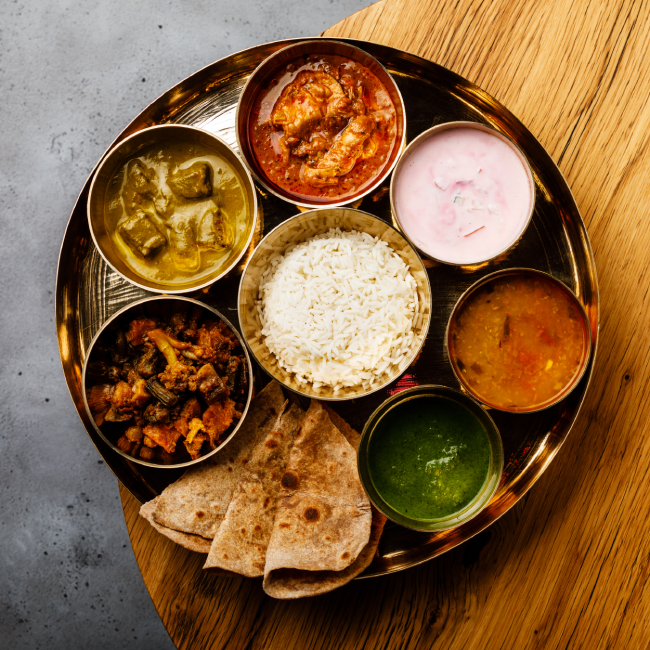

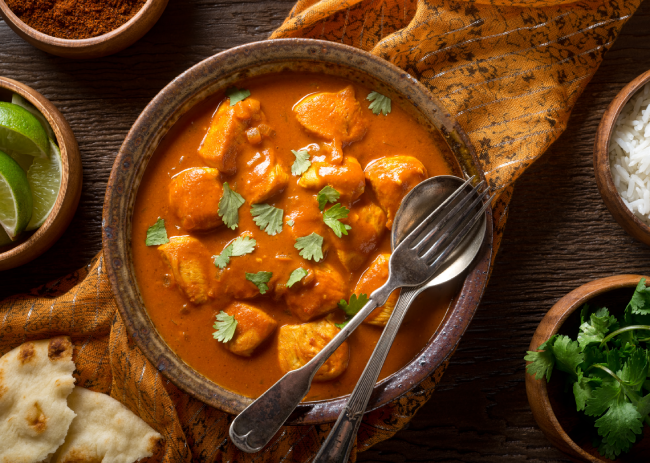
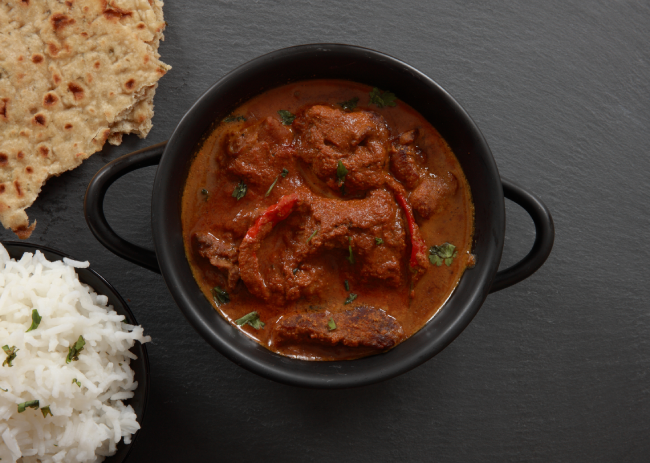
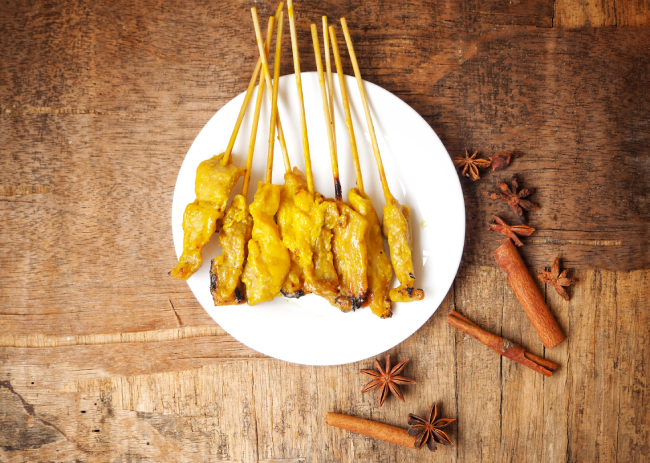
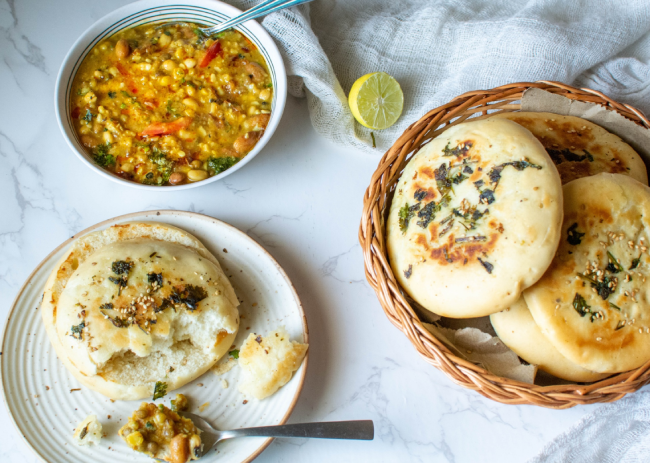
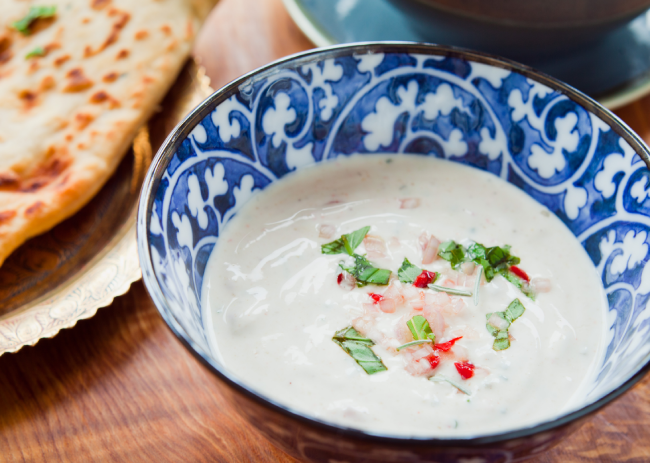

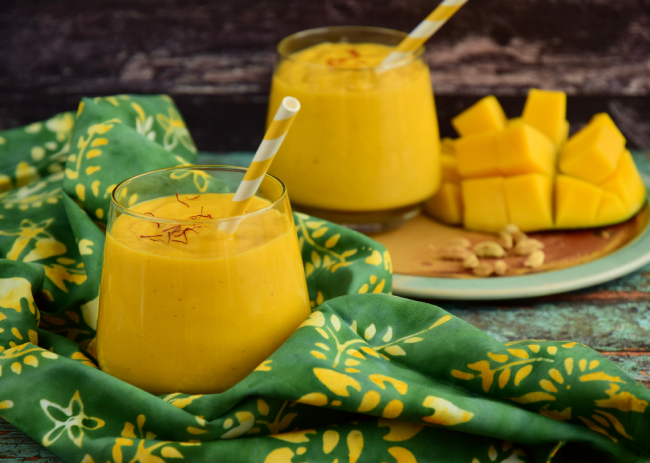

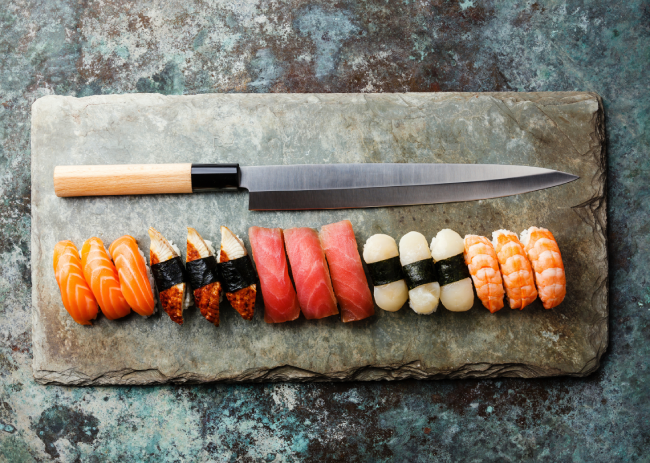
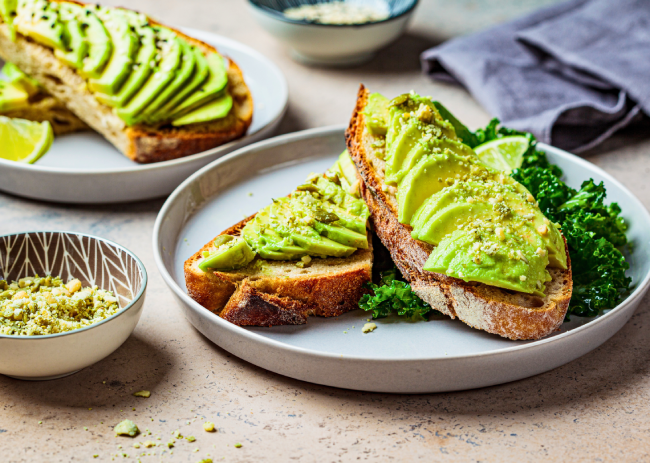
Simply delicious!